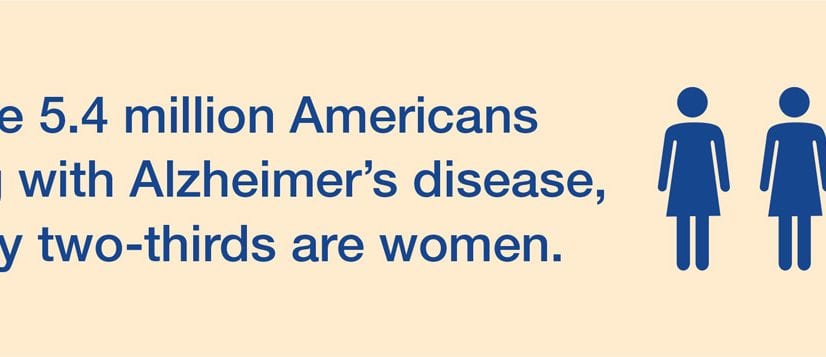
Posted April 21, 2010
A spate of headlines recently dimmed hopes for a wonder drug to fight Alzheimer’s disease. We know the existing drugs used to treat Alzheimer’s patients, including Aricept, Namenda and others, provide only modest symptomatic relief but do not treat the root pathology of the disease. Let’s look at three new drugs that attempted to get at the causes of the disease but failed. We’ll look at the “bad news,” comment on why they failed and then look at what’s in the pipeline signaling better news.
The first high-profile failure was Flurizan (tarenflurbil) by Myriad Genetics. A June 30, 2008, report by Myriad CEO Peter Meldrum concluded, “We are disappointed that Flurizan failed to achieve significance and we will now discontinue development of this compound.” Womp went Myriad’s stock and the hopes of millions as a result of this $60 million “failure.” The second is the disappointing results of trials for bapineuzumab by pharmaceutical partners Elan and Wyeth recently. The companies tried several variations of doses of this drug, but experienced safety issues at the higher and more effective doses because of the presence of vasogenic edema in some of the study’s patients. The development of “Bap” now has been taken over by Johnson and Johnson’s Janssen Alzheimer’s Immunotherapy unit, which announced on March 17 an extension of current trials with no announcement about results of those trials until 2012.
Third is the very recent spectacular rise and fall of Dimebon, a drug developed in Russia as an antihistamine and brought to the United States after extensive review of the Russian trials as an Alzheimer’s drug. Initial data was, in essence, too good to be true in its apparent ability to lower Abeta in the brain and cause a decrease in Alzheimer’s symptoms. Subsequent trials in the United States by the drug’s U.S. licensee, Medivation and its partner Pfizer, could not replicate this too-good-to-be-true data. In fact, U.S.-based trials, known as CONNECTION, showed no benefit. On the day the results of these U.S. trials were announced, March 3, 2010, Medivation stock lost 70 percent of its value.
We all know that drug making is a high-risk business. The pharmaceutical companies tell us this all the time, citing the high failure rate for every success. Those statistics are used to support what many people regard as very high prices on the fewer successful drugs to support the risk-taking. Some of this doubtless is true; but without getting into the economics of this issue, let’s look at the science. Why did these drugs fail, and in their failure can they help us improve on the next generation of therapies?
First, all of these drugs addressed what most researchers think is the key “bad guy” in Alzheimer’s disease pathology— the small protein (peptide) Abeta and particularly its genetic variant, Abeta42. (That means there are 42 molecules of the Abeta variant in this species instead of the more frequent 40 or other conformations.) The Abeta trail is a long and winding one that first pointed to Abeta42 as the substance that formed the plaques in the brain that somehow extinguished brain cell communication. Recently, the Alzheimer’s research field has moved to a more sophisticated understanding of how Abeta42 does its work. It now increasingly is thought to be toxic only or primarily in its aggregated, clumped or “oligomer” form. These oligomers now are seen to be forming at or near the neurons in the brain responsible for the neural communication that enables acquisition of new information and creation of memory.
The science of all of this is complicated and rapidly evolving, but the essence is that the focus of the cause of the disease has moved for the most part from the plaques to the formulation of the Abeta peptide itself and its coalescing into the more toxic oligomers.
One great challenge to the rapid evolution of the understanding of the causes of the disease is the assault on the “Abeta” thesis because of the failure of these drugs to stop the disease. If their target was the control or elimination of Abeta42 and they failed, the reasoning goes, maybe Abeta42 is the wrong target. Not so fast. The early drugs and this second “failed” generation have focused on trying to stop Abeta42 from forming in the first place. Flurizan, for example, was designed to block Abeta42 production by modulating an enzyme important to Abeta42 creation (“gamma secretase”). The drug failed because it was not potent enough to affect change in Abeta levels; stronger doses delivered to human patients created fatal side effects. That means the theory of the “mechanism of action” is probably not wrong, but this particular drug compound and its near relatives failed to achieve the appropriate risk/ effectiveness balance.
Bapineuzumab was based on Abeta immunotherapy (passive immunization), in which antibodies targeting Abeta are injected intravenously into AD patients. While initial trial data looked promising, more recent trials showed that, once again, high enough doses of the drug to be effective caused dangerous side effects for patients. A further complication is that the drug appeared to be slightly more effective in the group of patients that did NOT carry the best-known and most prevalent Alzheimer’s gene, APOE4. The hurdles to re-balancing this particular family of compounds will prove to be a great challenge to Johnson and Johnson’s Alzheimer’s unit, which now has taken responsibility for the drug trials. Finally, Dimebon. A strange story indeed, and a heartbreaking one for patients and their families who read about the promise of this “wonder drug.” While the Dimebon “method of action” against Alzheimer’s pathology is not yet apparent, what is clear is that based on the rigorous U.S. trials, the drug does not work. It is safe, but completely ineffective. Some who know this story more intimately suspect the original Russian data was misleading; others simply don’t know what to make of the disparity. In any case, there appears to be little or no hope for this drug as an effective therapy against Alzheimer’s disease.
What does all this tell us? Aside from dashed hopes and ruined companies, what it does NOT tell us is that the Abeta trail is a wild goose chase. Not at all.
From the new findings about oligomers, many supported by Cure Alzheimer’s Fund, we know a lot more about the toxicity of the Abeta42 oligomers and how that affects the neural synapses. None of these first- or second-generation drugs was aimed at stopping Abeta 42 aggregation or oligomerization; nor were any of them directed toward protecting the neural synapses. They were more directed toward stopping Abeta production altogether through modifying or eliminating steps in the production process.
Furthermore, from new and potentially paradigm-breaking research also sponsored by Cure Alzheimer’s Fund, we now learn that Abeta42 may be an integral part of the innate immune system. In other words, it is actually good for fighting off bugs in our system, particularly in the brain, and to develop drugs to stop its production completely or dramatically reduce it would be a big mistake.
Third, Cure Alzheimer’s Fund is supporting new research on more promising approaches to the regulation of Abeta. One of these tracks is the exploration of a whole new class of “gamma secretase modulators” that are safe and more potent than those used in Flurizan or other failed drug tests. A second is experimentation with drugs that specifically target one step of the cholesterol pathway, acyl-coenzyme A: cholesterol acyltransferase (ACAT) inhibitors, reducing generation of toxic Ab peptide in cells and in an animal model of AD. And finally, other research being funded by Cure Alzheimer’s Fund is screening all approved (and therefore safe) drugs in the entire human pharmacopeia to see which ones lower Abeta levels. Were those first- and second-generation drugs “failures”? Yes, if measured by their ability to stop the disease or provide immediate relief to patients, and that is clearly what is most important. However, in their failure, they have helped to correct direction along the “Abeta trail” and help us focus on more effective therapeutic approaches.
Where do we go from here? One conclusion is to keep following the Abeta trail. It is increasingly clear it is the seminal actor in Alzheimer’s pathology. Second, primary therapeutic targets based on this information should be focused on at least three approaches:
This will require heeding the lessons from what we are learning from genetics, now having identified more than 100 candidate Alzheimer’s genes for more study about how they affect risk for the disease; what the first- and second-generation drugs have taught us; and aggressive exploration of newer perspectives on the role of Abeta42 and how it can be modulated safely for effective reduction or elimination of risk for Alzheimer’s.
It is a challenging task that will require significantly increased resources. But the way forward is clear—follow the Abeta trail.





